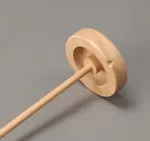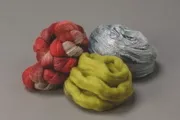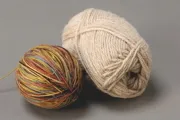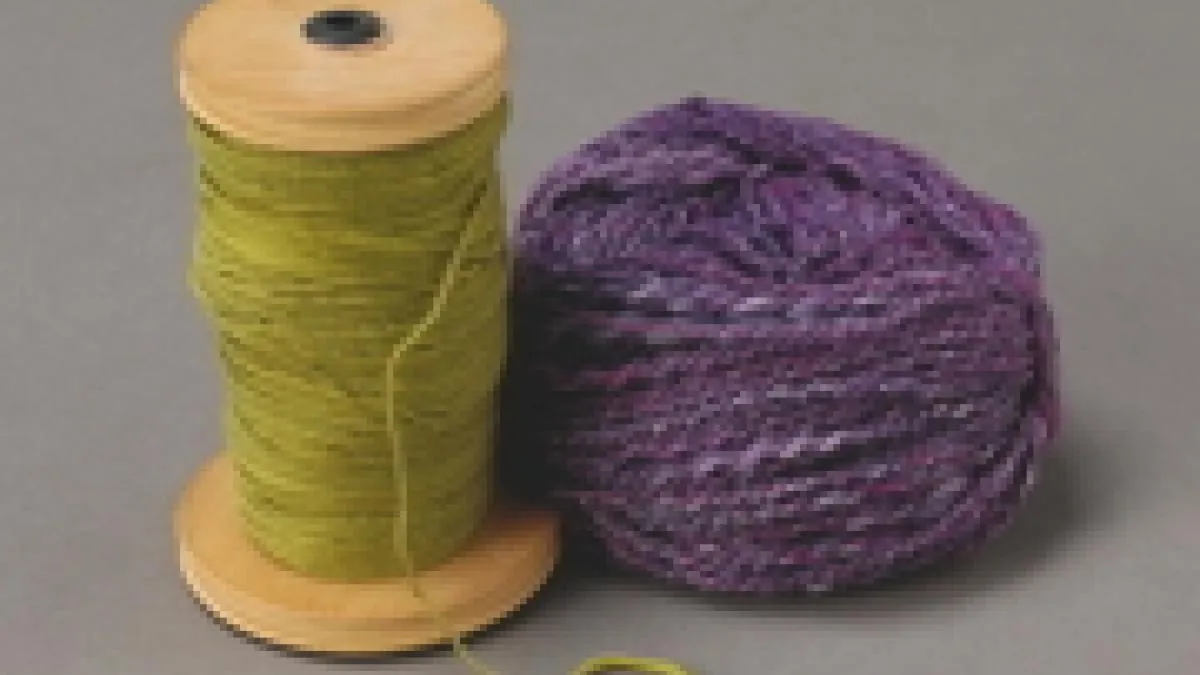Here at The Knitter, we have three spinners among our staff, all attracted to the craft by way of their love of knitting in the first place.
This step-by-step guide to spinning with a drop spindle was originally published in The Knitter issue 37, when our celebration of British design and British wool made it seem an appropriate time to go over the basics for those curious about making yarn.
As a spinning wheel is a fairly significant investment, we are starting with drop spindling and the very basics, assuming you have never spun before.
Which drop spindle should I choose?
Drop spindles come in all shapes and sizes and weights. A spindle is constructed of two main parts; the shaft – a long straight stick; and the whorl – a cylinder which the shaft runs through.
Most modern spindles also have a hook at one end of the shaft, which provides an easy way of ensuring your yarn does not ‘run away’ from your spindle! Older spindles may simply have a notch on the end, which is not ideal for beginners.
Heavier spindles
Will spin more slowly, and are better suited to thicker yarns.
Lighter spindles
Will spin quickly, and are better suited to finer yarns.
Top whorl spindles
are used for finer yarns and bottom whorl spindles for heavier yarns. This is because it is harder to keep a heavy whorl spinning evenly if it is placed at the top of the shaft, rather than at the bottom.

For a beginner
We would suggest a medium-weight top whorl spindle, of about 50g to 75g (2 to 3oz). If you continue to explore spinning, it is worth experimenting with different spindles to find which style you prefer.
Where to buy drop spindles
Drop spindles are available from local knitting shops and local craft stores, but you can also buy them online too. Shop the ranges at:
Which fibre to use with a drop spindle?

Fibre available for spinning is as widely varied as yarn is for knitting, but some is easier to spin than others.
One thing that governs the ease of spinning is the length of the fibre’s staple.
You can think of this as how long the hair is on the animal’s back or, in the case of natural fibres, how long the plant fibre is.
The amount of ‘give’ in each fibre, and its thickness, also play a role in the ease with which you will spin it. Wool fibres are widely viewed as the easiest to begin spinning with. The structure of wool means of that it holds together well, as it is made up of tiny scales which will stick to each other.
Shetland breeds produce soft ‘sticky’ wool with relatively long staples of approximately 5 to 12cm, which is very forgiving of inexperienced spinners.
Merino wool has an average staple length of about 7 to 10cm and is also a good option, although it is more slippery, which some people find trickier to manage.
Worsted or woollen?

Yarn can be handspun generally in one of two ways - worsted or woollen.
Worsted spinning squeezes all the air out of the yarn, to produce a strong, dense, often shiny yarn, where the fibres are running parallel alongside each other. Sock yarn is usually worsted-spun.
Woollen-spun yarn still has air trapped inside it, and the yarn will be fluffier, with a generally matt appearance. It breaks more easily, but the fibres are all ‘muddled up’, which makes it stick together better as well. Classic Shetland yarns used for Fair Isle are woollen-spun.
Plied or singles?

Handspun yarn can be left as singles, or plied together. Fabric knitted with singles will tend to bias. Plied yarn will be stronger and more even, as imbalances in the singles will be disguised when they are plied.
Singles are usually spun clockwise, known as Z twist. They are then plied together counter-clockwise, using S twist.
Thinking of how you draw the two letters can help you remember which is which.
This system is well suited to knitting, but you may notice that when crocheting many yarns will untwist - this is to do with the twist that knitting or crocheting puts through the yarn as you work.
Processing of fibre
Fibre for spinning is available in a whole range of formats, from unwashed, greasy grey fleece straight off the sheep’s back, to finely combed ‘tops’, which come pre-dyed and wound into neat coils.
Different formats are suited to different kinds of spinning. Carded yarn, available in rolags or batts, is suited to woollen spinning.
Batts can also be pulled apart for worsted spinning.
Tops are great for worsted spinning and are also available in finer formats (sliver and roving). For now, we will look at worsted spinning, using tops, which are easy to buy commercially.
